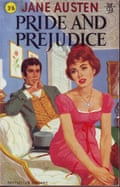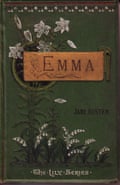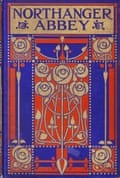Jane Austen aficionados think that they know the story of their favourite author’s posthumous dis-appearance and then re-emergence. For half a century after she died in 1817, her books were little known or read. A few discriminating admirers such as George Henry Lewes and Lord Macaulay kept the flame of her reputation burning, but most novelists and novel readers were oblivious to her. Then, in 1869, her nephew James Edward Austen-Leigh published a memoir about her and the public got interested. Her novels started being republished and widely read. She has never looked back.
Janine Barchas’s The Lost Books of Jane Austen puts us right. Her book about books is a beautifully illustrated exploration, indeed compendium, of the popular editions of Austen’s novels that have appeared over the last two centuries. This includes those decades when Austen was supposedly lost from sight. The first chapter is a “vignette” on a copy of Sense and Sensibility, published in 1851 for George Routledge’s Railway Library (books suitable for reading on the train). It cost one shilling and was bought for the 13-year-old Gertrude Wallace, the youngest daughter of a Plymouth naval officer. It is the first of many examples of cheap and popular editions of Austen’s work that kept it alive for ordinary readers and that literary scholars have largely ignored.

After Austen’s death, the copyrights to her novels were bought by the publisher Richard Bentley, who issued them in his Standard Novels series in 1833, in single volumes at six shillings each – much cheaper than the triple decker editions selling for a guinea and a half, but still out of reach of all but the affluent. He cut his prices in the 1840s, but already there were alternatives. By the late 1840s, there were what we would call paperback editions of her novels cheaply available and aimed at train travellers. Pioneering publishers such as Simms & M’Intyre produced Austen novels for a shilling a shot, and then for sixpence each in their Books for the People series. (They paid no attention to the fact that Bentley officially still owned the copyright to some of these.)
“Cheap books make authors canonical,” proclaims Barchas’s first sentence. Thousands of mid-century readers consumed “yellowback” versions of Austen’s novels, so-called because of the yellow paper stuck to the back of them on which advertisements were printed. The sheer proliferation of cheaply produced editions of Austen’s fiction has been invisible because very few of these books have survived. Paradoxically, the expensive first editions of Austen’s novels are now easier to find than the mass-market editions of the Victorian age. Barchas has clearly relished her detective work (and apparently amassed quite a collection herself). She not only describes them, she shows us what they looked like.
Photographs are essential to this book. There in front of you is the 1851 Parlour Library reprint of Mansfield Park, with its red design and lettering on a startling acid green cover, in waxed paper boards. It retailed at WH Smith at British railway stations for two shillings. The willingness of publishers to spice up Austen’s novels is caught in the 1870 Chapman & Hall edition of Pride and Prejudice, whose cover depicts Lydia Bennet flirting with officers at their camp in Brighton, or the 1887 sixpenny Sense and Sensibility, featuring Colonel Brandon and Willoughby pointing their duelling pistols at each other (neither scene was actually included in either novel).
Tracking down these endlessly repackaged reprints, Barchas is in terra incognita. Scholarly bibliographers have minutely recorded the various respectable editions of Austen’s fiction, but most of these cheap popular products, never having made it on to the library shelf, remained unknown to bibliographers. These are volumes that scarcely feature in the catalogues of the great research libraries of Britain and North America. The existing record is, as Barchas characteristically says, “gobsmackingly incomplete”. Her style is sometimes informal, but her attention to print history is painstaking.

She explains the importance of stereotyping processes, whereby printers could mould and then cast in metal the expensively assembled type of a new edition. The resultant stereotyple plates could be used over and over again. Routledge would go on to use his same stereotype plates to produce seven more editions of Sense and Sensibility over the next three decades. (Barchas gives us a photograph of all of them in their very various liveries.) Austen stereotype plates would be sold on from one publisher to another, the resultant type becoming more and more faded as one printing succeeded another.
There clearly was a new enthusiasm for the novels after 1870. Barchas shows us the flurry of colourfully jacketed Austen volumes that began appearing, some evidently intended for the juvenile reader. In America, where publishers treated Austen’s texts with greater literary respect, the market for her work was much quieter in the mid-19th century, but appears to have taken off in the 1870s. Her novels became available for a dime or 15 cents each. In Britain, the sixpenny novel became standard. Soon Austen was being serialised.
In the 1890s, radical publishers produced a library of “famous books” for working-class readers at a penny per volume, which included Sense and Sensibility. At the same time Pride and Prejudice was being boiled down by two thirds for William Stead’s Penny Prose Classic series for young readers. In the 1890s the soap manufacturers Lever Brothers published their own editions of the two novels as prizes for teenage consumers who sent in the largest number of soap wrappers. Barchas dedicates a whole chapter to her researches into the Sunlight Library, calculating that the company gave away some 1.5m books over the course of seven years (though perhaps more by Sir Walter Scott than Jane Austen).

Another chapter chronicles the surprising religious and morally improving uses of her fiction. In the 1840s her novels were included in a multi-volume library of nonconformist tomes aimed at right-minded female readers. Often, they were given as prizes in Sunday schools (despite the creepy vicars she depicts). In the 1890s, editions of Austen were commissioned by a Christian temperance society for distribution to labourers in the West Midlands: Mansfield Park was presented as an alternative to another visit to the pub.
Barchas follows popular editions of Austen well into the 20th century, looking at how publishers began to take images from Hollywood films such as the 1940 MGM Pride and Prejudice to lend excitement to new editions.
A final chapter charts “The Turn to ‘Chick Lit’”, with Barchas arguing that it was only really in the 1960s that “gendered marketing strategies” created the false sense that Austen was a women’s novelist. Among the dizzying variety of 1960s paperback covers that she displays – from austerely antiquarian to lividly psychedelic – are examples of “pinked” editions, deploying the colour wherever possible as a “consumer signal to women”. Sales seem to have risen even further.
Barchas enjoys quoting such writers as Mark Twain and Henry James, as they huff and puff about Austen’s mere popularity. The lesson of this delicious book is that she was even more popular for even longer with an even greater variety of readers than we ever thought. When you look at all the uses to which she was put, you think of Frank Kermode’s definition of a literary classic as a work that “sub-sists in change, by being patient of interpretation”. Austen’s novels have long been very patient.
